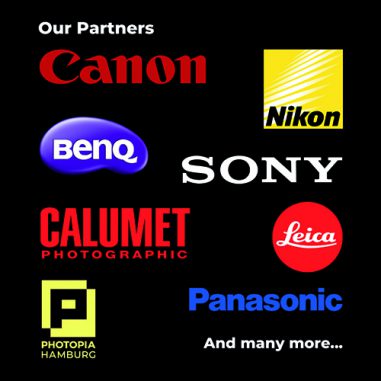The same devices can be used to take videos and photographs, and the results can be viewed, processed, stored, and shared using the same equipment. Camcorders are becoming photo cameras, while photo cameras are becoming camcorders. But that is only the first step, since the digital recording systems to be exhibited at photokina can take videos and photographs at the same time. The systems automatically ensure photographers never miss the right moment since they enable them to rapidly take a whole series of individual pictures by simply pushing the shutter button. Intelligent automatic systems take care of the rest and can even select the best picture in a series. This is the case, for example, with the Best Image Selection feature of the Canon Ixus 1000 HS.
The question of whether to film or photograph will also become irrelevant for anyone who would like to have a standard 10 x 15 paper print from a HD video recording. That’s because both the trade’s new Kodak Picture Kiosks with their video snapshots feature and the new software with a full HD movie print function for the Canon Pixma Printer (e.g. iP4850) make it possible to print individual images of a video clip.
What’s most important about the cross-category features is not only that they allow a single device to record full HD films as well as take photographs, but that the pictures can be quickly and easily uploaded to social networking platforms like Facebook, flickr or YouTube. In addition to enabling the photographer or video enthusiast to determine at the camera which photo or video clip will be put online, the recording device comes with software (e.g. Nikon ViewNX 2) that can automatically take the user to the desired Internet platform when the camera is connected to the PC or notebook computer and, if necessary, also convert the photos and videos to the required Web format (e.g. Panasonic HDC-SDX1). The latest generation of PJ series Nikon Coolpix digital cameras can not only display their own photos and videos on a wall or a screen using their integrated projector, but also presentations stored in a laptop or PC. The new digital cameras from Kodak now come with an integrated share button, which enables users to immediately mark pictures so that the selected images are automatically uploaded to Facebook, YouTube or the Kodak Gallery when the camera is hooked up with a PC.
T
he extension of the moment
The times in which a single shot was enough to capture an important moment are past. In the future, the perfect picture will consist of several individual photographs. The latest digital cameras from Canon, Fuji, Nikon, Olympus, and Ricoh use several shots made in succession to optimize the resulting image. The image processor does this by selecting the optimally captured details from a number of individual photographs and puts these together to form a new, perfect picture. This technology can create low-noise photos in poor lighting conditions. This is the case, for example, with the Ricoh CX4, whose "night landscape multi-shot mode" combines four exposures into a single photograph for reduced image noise.
The latest generation of Sony Cybershot cameras such as the TX9 reduce color noise by taking up to six separate shots, from which they then combine the best exposed details into a new photograph.
Another Sony feature is the Background Defocus mode, in which the camera takes two shots: one with a sharp foreground and one with a blurry background. As a result, even a compact camera can create an image that generally only SLR cameras can achieve with a large aperture. The Pro Focus feature of the new compact cameras from Fuji similarly uses two or three separate shots.
Camera manufacturers are also using the multi-shot technique to adjust the dynamic range so that highlights and shadow areas in the motif can still show great detail. For example, when in HDR mode, the new Canon PowerShot S95 takes three shots with different exposures which are then combined into a high dynamic range image.
Circumventing the laws of optics
Another example of how the new, software-based multi-shot techniques are being used is in the seamless merging of individual images to create impressive panoramas, the coverage of which far exceed the angle of view of the lens used. While it used to be necessary to carefully overlap individual images and join them either in the camera or on the PC, photographers now only have to sweep the camera around to capture such a wide image. (Sony Sweep Panorama feature, Fujifilm Motion Panorama).
The multi-shot technique can also be used to control how much of the image is sharp. To do this, many individual shots are taken at different ranges and subsequently merged from front to back to create a single image that is sharp throughout. A still very recent technology that is expected to appear at photokina as a result of several patent applications is the combination of shots taken with and without a flash to create a low-noise image with "Available Light" properties.
Expanding into the third dimension
3D images are not only taking cinemas showing Hollywood blockbusters by storm, but increasingly living rooms as well. A trend that always ignited discussions at photokina in the past is now about to achieve a breakthrough and become a dominant feature. Photo cameras and camcorders for high-quality 3D recordings will give images an additional dimension. As a result, 3D-capable cameras and camcorders and lenses and close-up lenses that make 2D devices 3D-capable will be among the highlights at this year’s photokina. Panasonic, for example, will present a 3D lens for its series of G Micro System digital cameras as well as 3D-capable camcorders and TVs.
After having ushered in the beginning of three-dimensional digital photography at photokina 2008, Fujifilm will now present the next generation of devices at the trade fair in Cologne: the FinePix Real 3D W3. The new camera has two separate high-quality recording systems, enabling it to shoot 3D HD videos and photos of up to 10 megapixels. Viewers do not need to wear 3D glasses to experience the three-dimensional effect on the large camera display. The pictures can be viewed on any 3D-capable TV set for an impressive viewing experience. Among the advanced features of the new 3D camera generation are time-delay shoots of the right and left halves of a picture, an Interval mode, and Parallax Control that allows users to adjust the 3D image.
Expanding the scope of creativity
The large number of smart automatic features is making it increasingly easier for photographers and video enthusiasts to achieve outstanding results. Users no longer need to have any photography skills to make professional looking pictures or videos. In most cases, users only need to push the shutter button to take a technically perfect picture of a particular scene. At the same time, the number of individually adjustable parameters has become virtually limitless. Photographic equipment can now create pictures which only exist in the photographer’s imagination. As a result, there is practically no limit to the creativity of the users. Whereas such image adjustments were previously made on the computer with high-performance image processing software, many effects can now be produced when taking or showing the images with the camera. Olympus took a pioneering role in this field early on with its ART filter and Magic Filter functions. Almost all camera manufacturers now offer shooting modes and abstraction effects like the cross processing, fisheye view, pinhole camera, pop art, and monochrome functions in the latest-generation cameras. In addition, some models also have features that simulate the effects of conventional films (e.g. Fujifilm Finepix F300EXR).
The abstraction effects are supplemented by image optimization functions that enable cameras to automatically straighten crooked images. In the latest generation of products, the camera manufacturers are offering functions such as Samsung’s Smart Crop feature that straighten images of paintings or flip charts and correct converging verticals caused by pointing the camera upward when taking pictures of tall buildings.
The new class society
Two new categories of cameras have established themselves on the digital camera market, of which they are now set to gain a substantial share: compact cameras with interchangeable lenses and pocket-sized hybrid minicams. The two types of devices can be used to take photographs as well as record videos. An outstanding property of minicams is that they can be easily connected to social networks like Facebook, YouTube, and flickr, which focus on image sharing and communication. Photographs and videos have become an important means of getting attention and recognition and they let people share their lives with families and friends.
At photokina, Kodak, Panasonic, Samsung, and others will exhibit new devices of this class, which enable users to upload images to the Internet at the push of a button. The trend towards personalization is also being assisted by the fact that camcorder housings can be tailored to suit individual tastes. Not only is Panasonic’s new Facebook and YouTube-compatible TA1 series available in four different color variants, users can also choose from a wide range of design foils for the housing, and even print it their own creations.
Panasonic has recognized the trend towards personalization for these devices, which are particularly popular among young consumers. The company has therefore made it possible for buyers to use skins to give their new TA1 HD Mobile Camera a design of their own choosing.
New system camera developments
Ever since they were introduced to the market two years ago, mirrorless system cameras with interchangeable lenses have shown capabilities that have impressed amateur and professional users despite the cameras’ compact size. The range of these lightweight cameras is now much broader, and that applies both to the Micro Four Thirds devices from Panasonic and Olympus as to the APS-C sensor cameras from Samsung and Sony. photokina 2010 will help decide which of the cameras from this class, which are in between compact zoom cameras and SLR systems, will take the lead. This newest camera category is expected to generate the most important technological and functional innovations in the future.
The possibility of separating the viewfinder and the lens from each other laid the basis for this new class of cameras. This principle will be further developed in the new products that will be unveiled at photokina 2010. Modular systems are conceivable, in which the viewfinder display, memory unit, and imaging module would function as separate components that would wirelessly communicate with one another.
The hardware follows the software
High-performance image processing systems for both professionals and home users will make it easier for people to optimize, store, and use digital images, and at the same time make them more versatile. In addition, they will pave the way for a new category of accessories. Electronically controlled tripod heads for the precise shooting of partial images for panorama pictures and precision focusing rails for the true-to-scale shifting of the plane of focus as well as holders for the comfortable use of SLR cameras when filming (Gitzo, Novoflex) help photographers edit HDR images or assist them in taking photos with an extended depth of field as well as individual images that are subsequently combined into panorama pictures.
Image communication needed for mobility
Craft skills have more or less become obsolete in photography. Instead, photography has gained new fans as a result of new creative possibilities and fast image communication via the Internet and cellular phones. Images (whether photographs or videos) have become the most important and popular means of communication through which we remain in contact with the world while at home or on the road. That’s one of the reasons why many manufacturers will display new image-sharing systems at photokina 2010. The solutions with which the imaging industry wants to simplify and accelerate image communication range from integrated W-LAN interfaces and foldout USB plugs to firmware based transfer software for quickly uploading images from the camera directly to the Internet. People who take pictures while on the move want to know later on where a specific image was taken. Thanks to positioning technologies like GPS, an increasing number of cameras can do this either by themselves or with the help of accessories. Some cameras can even display information stating where the photographer is located and what he or she is taking a picture of (Nikon, Panasonic, Samsung, Eye-Fi).
Accessories now an important commercial market
Normal and rechargeable batteries, add-on filters, tripods, and bags for photographic equipment are just some examples of accessories whose capabilities, breadth, flexibility, and style are changing. Tripods have to meet a wide variety of needs. While some have to be usable everywhere, others have to be lightweight, be made of strong materials, or have high-quality workmanship. There’s no limit to the requirements. Camera bags for the consumer market take the user’s individual style increasingly into account and are so flexible in design that they can also be used for leisure activities other than photography. The larger sized bags have a compartment for holding notebook computers as standard and their color and style are oriented to the current fashion tastes of young consumers. However, there are also bags for people who prefer a classic elegant style, as well as for outdoor photographers who have high demands with regard to the good workmanship of durable materials.
photokina 2010 will show what tasks images have to perform as the most important means of communication in the world today. The focus is no longer on the artistic representation of the motif in all of its aspects. Pictures and videos preserve memories and depict the latest experiences and emotions so that they can be shared with others. In an age of globalization and increased mobility, people often are far away from each other or retire for a while so that they can find peace and quiet. Images help keep people in touch, ensure they can get attention and recognition, and enrich communication. As a result, it’s very important that people can not only photograph motifs at any location, at any time, and under all conceivable conditions, but also make these images easily available to others via the Internet. photokina documents the current image culture and how things will develop in the future.
The world of imaging is increasingly shaping our lifestyles. When they meet at photokina 2010, all of the sector’s leading manufacturers will once again display pioneering products, systems, and solutions that will dramatically change how we deal with images and also expand communication by means of images and make it even more multifaceted.





